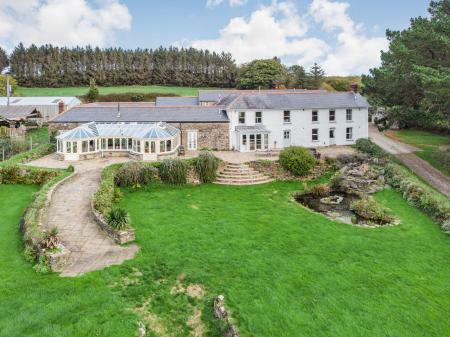As you browse the attractions listed on the Britain Express website, you'll run across a peculiar little H symbol, which we call a Heritage Rating. If you've ever wondered about Heritage Ratings, and how they differ from a standard star rating, here's the inside story.
Over the past several decades(!) of publishing the Britain Express website, I've visited something approaching 7,000 historic sites around the UK, from castles to stately homes, and gardens to country churches. After visiting each historic site, I write about the experience of visiting and add a lot of my photographs, with the aim of sharing what I enjoyed about visiting each site.

I'm a history nerd. I get off on places with an intriguing history; places with stories to them, places that make me feel excited to visit because of their heritage, whether that interest is due to famous (or infamous) people associated with the attraction, or due to something else, like interesting architecture, connections to important events, or simply its location in an interesting historical landscape.
Early on in this journey, I realised that there was no established way to let readers know how interesting each attraction was from a historical perspective. Of course, there were star ratings, such as those used by travel boards and visitor reviews, but those star ratings don't touch on the historical interest of the attractions.
For example, a stately home might have a poor array of visitor facilities and receive a low rating from the tourist board, or it might get terrific user reviews, even though the attraction wasn't necessarily of great historical interest. A modern garden might be five-star rated as an attraction and get wonderful visitor reviews, but have little in the way of historical importance.
I decided that, to convey to readers how interesting an attraction was from a historical perspective, I needed a whole new system of ratings, a way to show in simple terms how interesting a location was to fellow history nerds like me.

So I invented the Heritage Rating (copyright not pending), a simple, and simplistic, way to see at a glance how interesting an attraction is from a historical standpoint. After a ridiculous number of attempts to create a fancy eye-catching graphic to illustrate an attraction's heritage rating, I settled on a very simple red letter H inside a circle, with a yellow background for contrast. It looks like this:

I then spent hours trying to come up with an objective system of evaluating attractions based on age, famous connections, location, and so on.
I failed miserably.
I couldn't, for the life of me, find an objective way to convey heritage interest, so I gave up, and created the completely subjective system of Heritage Ratings that you will see with every attraction listed on Britain Express. It's one person's point of view, and since I write all the attraction articles myself, that person is me, David Ross, editor, writer, photographer, and office cleaner for Britain Express.
Can the rating be influenced by the attraction itself?
No.
They can ask, of course, and we have had quite a few attractions contact us to ask that their rating be increased.
I can't be bribed. Besides, that would destroy the whole value of the rating system.

We have, on occasion, increased an attraction's rating, usually when they were able to provide us with information about the attraction that made its historical interest more apparent. I have also, on occasion, refused to increase a rating. It is, after all, totally subjective; it's my honest appraisal, having visited the location.
As it happens, I'm fairly generous when it comes to the heritage ratings. Did I happen to mention that I'm a history nerd? I love history. For what it's worth, I even have an Honours Bachelor of Arts in English History. I'm enthusiastic, and I hope that comes through in the attraction articles. As a result, if I'm unsure, I usually err on the side of a higher rating.
But what exactly are those ratings?
The Britain Express Heritage Rating System
- Low heritage interest
- Some heritage interest
- Good heritage interest
- High heritage interest
- Exceptional heritage interest
Let me reiterate; a low Heritage Rating is NOT a reflection on the attraction's visitor experience or facilities. It is an indication of its historical interest.
But how do I, subjectively, come up with those ratings?

When I began to establish the rating system, I assigned higher ratings for older attractions, but I quickly realised that that approach wasn't a good one. For example, if the ratings were based purely on age, a solitary standing stone in a remote farm field in Wiltshire would have the same rating as Stonehenge and a superior rating to Windsor Castle.
I quickly abandoned age as the determining factor and resorted to an extremely vague judgement based on historical interest; how likely would I be to recommend the attraction to a fellow history nerd based purely on its heritage value? Is it a 'can't miss' site with exceptional interest? Award it a Heritage Rating of five.
Is it, by contrast, interesting, but not exceptional? Perhaps a three is appropriate. This is, by far, the most common rating.
Is it of little historical interest? A Heritage Rating of one might be appropriate.
'Low-rated' Attractions - what does it mean?
Let's look at that final case.
I've visited plenty of attractions around Britain that were extremely enjoyable and had a terrific visitor experience; places that I would happily recommend to others. However, if those attractions had little historical interest, I would award them a Heritage Rating of 1.
Some of those attractions are obvious; countryside sites whose major appeal is scenic beauty might be well worth a visit to explore, yet would still be rated low on the heritage scale. The same might be true of modern gardens, parks, and museums.
By contrast, I have visited places that were of great historical value, yet didn't have the greatest visitor experience. I would award these attractions a high Heritage Rating, based purely on their heritage value.
I hope that makes it clear; the Heritage Ratings are not a review of the attraction's visitor experience and they are in no way comparable to a typical star rating.

Heritage Highlights
When you read an attraction article, you will often see an additional note, which we call a 'Heritage Highlight'. This is a simple description of something historical that makes visiting the attraction worthwhile. It might be an architectural feature, something related to a famous person, or simply whatever it is that makes the attraction exciting to visit for someone interested in history. It is, I suppose, something that will help readers to see at a glance if the attraction is something they might enjoy seeing for themselves.
Here are a few sample Heritage Highlights:
'The infamous Gunpowder Plot was hatched here ... or was it?' (Eastbury Manor House, rated 3H).
'The graves of King Arthur and Queen Guinivere, though historically dubious, offer a real insight into the medieval mindset.' (Glastonbury Abbey, rated 5H).
'Is this the original Camelot?' (Tintagel Castle, rated 4H).

Our Highest Heritage-Rated attractions
There are, as of this writing, 321 attractions on our website that have received the highest Heritage Rating. Most of these are obvious, such as Warwick Castle and St Paul's Cathedral, whereas others, like Penmon Priory, Creswell Crags Cave, and Cwmhir Abbey, may surprise you. Those ratings are my honest appraisal, based on my visit and the historical research and reading I have done to write an article on each location.
Here are five of my favourite 5H (top-rated) historical attractions, in no particular order:
And let's give equal billing to five of my favourite 1H (lowest-rated for heritage value) attractions:
- Barbara Hepworth Museum and Sculpture Garden
- Branklyn Garden
- Fairhaven Garden
- Slimbridge Wildfowl and Wetlands Trust
- Westonbirt Arboretum

All of these 'lower-rated' attractions are wonderful to visit and, in many cases, my family enjoyed ourselves so much that we have returned several times.
So, there you have it; a look at the Britain Express system of Heritage Ratings.
As far as I am aware, no one has ever attempted to create ratings like ours. They are totally subjective and probably idiosyncratic, but I hope they will help you make your own decisions about what attractions you would most like to experience for yourself.
Have fun exploring. I did!
MOST POPULAR POSTS







